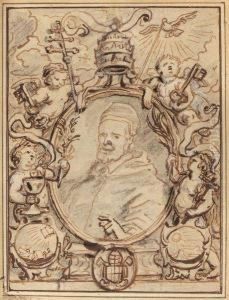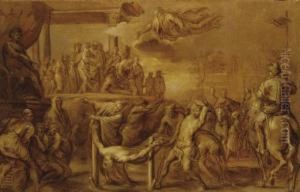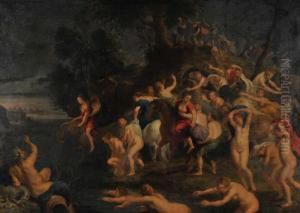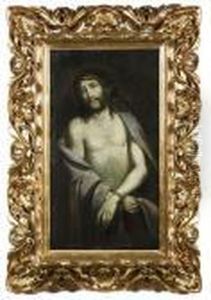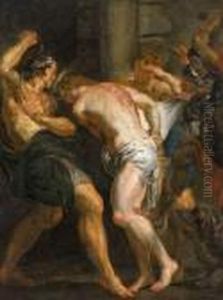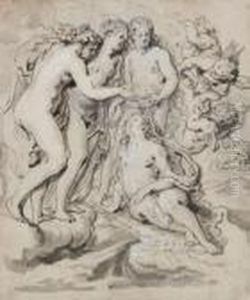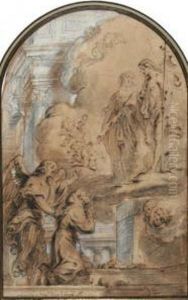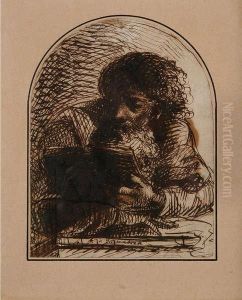Abrham Van Diepenbeck Paintings
Abraham van Diepenbeeck was an accomplished Dutch painter and designer, born in 's-Hertogenbosch, Netherlands, in 1596. His artistic journey began under the tutelage of his father, a glass painter, which laid the foundation for his future endeavors in various forms of art. However, Van Diepenbeeck's career took a significant turn when he became a pupil of Peter Paul Rubens, one of the most influential figures in the Baroque art movement. Working with Rubens, Van Diepenbeeck was exposed to high Baroque style and techniques that profoundly influenced his artistic development.
After his apprenticeship, Van Diepenbeeck established himself as a versatile artist, excelling not only in painting but also in designing tapestries, stained glass, and book illustrations. His style, though heavily influenced by Rubens, developed its unique characteristics, blending meticulous detail with dynamic compositions. In the 1620s, Van Diepenbeeck made a pivotal move to Antwerp, which was then a vibrant center of art and commerce. This relocation allowed him to immerse himself in the thriving artistic community and further his career.
Van Diepenbeeck's works encompassed a wide range of subjects, including religious themes, mythological scenes, and portraits. His ability to adapt and excel in multiple mediums earned him commissions from prominent figures and institutions of the time. Notably, his designs for stained glass windows can still be admired in various churches in Antwerp and beyond. Despite his success, Van Diepenbeeck's name is not as widely recognized as some of his contemporaries, partly due to the overshadowing fame of his mentor, Rubens.
Throughout his career, Abraham van Diepenbeeck remained active in the artistic community of Antwerp, contributing to the city's cultural legacy until his death in 1675. His body of work, while reflecting the influence of Rubens, stands out for its originality and mastery across different art forms. Today, Van Diepenbeeck is remembered as a significant figure in the Baroque period, whose contributions continue to be celebrated for their artistic value and historical importance.
